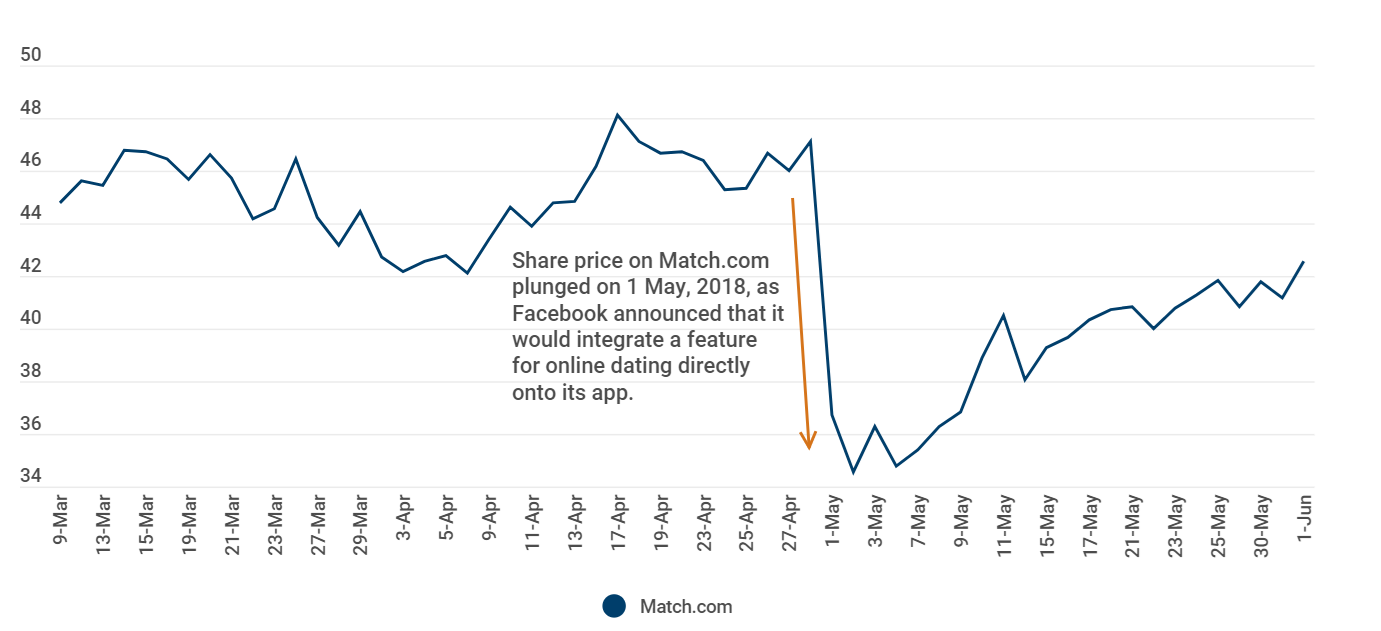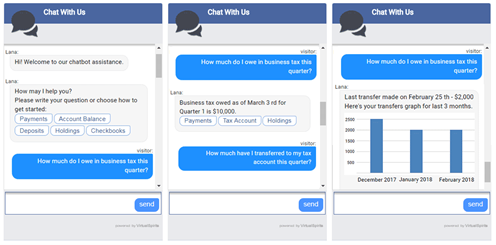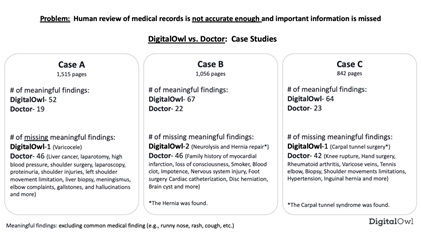
Table of Contents
Through the years, AI has steadily been gaining popularity. It has already found its use in finance. Companies are using machine learning models to predict movement on the stock markets, to assess whether someone is a good applicant for a loan, to combat money laundering, etc. All of these prove that using AI in finance is not new, so why not leverage the power of language processing systems? Natural language processing, or NLP, has a multitude of different applications, some of which companies already use without even noticing. Finding a new application for NLP could very well be a way for a company to distinguish itself from its competition.
What is the Evolution of Natural Language Processing - NLP?
Before I dive into how language processing systems can be used in finance, let's put things into context by talking about what NLP is. First, I'll need to explain how it evolved from its beginning up till now.
NLP has been around since the 1950s. NLP’s main goal now is the same as the main goal back then: to create a system that can both understand and generate human language. During the 20th century, the popularity of NLP techniques steadily increased. A noticeable change occurred at the start of the 21st century. That sudden growth in popularity is mostly attributed to the growth of the web at that time.
In the beginning, NLP systems were completely based on following predefined rules. The rules that were used allowed computers to emulate human language to a certain degree. However, what was achieved wasn't even remotely applicable on a large scale in practice. Because rules were mostly defined manually and often had to be changed, the accomplishments of that period are fairly limited and unimpressive by today's standards.
The second period in the history of NLP is defined by a big change. A revolution occurred in the late 1980s, caused by the introduction of machine learning. Machine learning as a technology allowed language processing systems to evolve from following rules to using corpus linguistics, or text collected in its natural context and annotated by humans or computers. To put it simply, instead of following some pre-written set of rules, machine learning models automatically created new rules to follow by analyzing some example text. Models like these were also able to express how certain a model was of its results.
Because rules were created through statistical inference, models could return the relative certainty they had in a particular answer. By offering multiple solutions to a problem, each with its affiliated relative certainty, models could be included in larger systems. Combining multiple models produced better and more reliable results than using a single model.
As interest in the field of NLP grew, a lot of improvements were made in terms of how well language processing systems worked. However, all of the improvements made before the 2010s pale in comparison to what has been achieved in the last ten years.
Since 2010, neural networks became widespread in the field of language processing and almost completely replaced statistical methods. Different neural network models, including representation learning, achieved results on a never-before-seen scale in many different areas of language processing. For example, great improvements were achieved in the field of machine translation via a paradigm shift: neural networks could create sequence-to-sequence transformations, which completely avoided the need for intermediary steps that statistical models needed to accomplish the same task. Recently, the rate at which the NLP market has been growing has increased further. Each year, new deep learning models surface and become the "next great thing," only to be replaced the very next year with an even better model.
Although it might seem counter-intuitive to invest in a technology that is constantly changing and to use models that might become second-rate next year, the truth is that the models used today are already very good, as well as thoroughly tested by the many organizations that have already deployed them to current use. Why risk running into bugs and errors with an unproven technology when you can instead use technology that has been thoroughly tested by companies like Google that have been working in the field of NLP for years? NLP has been in development for decades, so companies that are just now getting into it can piggyback off all the research that has been done through the years and just use a finished model that suits them best.
Why Use NLP in Finance?
NLP is already widely used in financial institutions. According to a 2020 Emerj article regarding NLPs in finance applications, an AI vendor working with banks will offer that bank a solution that includes some form of NLP in 39% of cases. And not without reason: you can see many examples where one line of text caused great changes in the market, such as the announcement Mark Zuckerberg made in May of 2018. "We want Facebook to be somewhere where you can start meaningful relationships." Many probably didn't think this announcement was important, but investors in companies like Tinder and Match.com definitely did.
In a 2019 article discussing NLPs predicting financial movements, the Man Institute reported that this one line of text caused the share prices of dating websites such as Tinder and Match.com to plunge by more than 20%. Words hold more power than we might think. Interpreting and predicting how words will influence the financial sector is incredibly important for financial firms and their clients.
Image Source: Marinov, Natural Language Processing: Shakespeare Without the Monkeys, Man Institute. https://www.man.com/maninstitute/shakespeare-without-the-monkeys
Another great example is Elon Musk’s Twitter post. When he announced on Twitter that Tesla shares were too high, the share prices tanked. All because of one Twitter post. Social media has become so powerful that tweeting a single sentence can boost the market value of a company by millions of dollars, but can also cost the company millions as well. Knowing what to write and when is also something NLP can help companies with.
Image Source: Bursztynsky, Tesla shares tank after Elon Musk tweets the stock price is ‘too high’, CNBC. https://www.cnbc.com/2020/05/01/tesla-ceo-elon-musk-says-stock-price-is-too-high-shares-fall.html
These are just some cases of words potentially being worth millions, and as such should demonstrate the importance of using NLP. A company with the right model that could predict these changes could potentially save or make a lot of money.
What are the Applications of NLP?
Using AI to analyze human language and derive meaning from it is something of interest for many, not just finance companies. The approach to interpreting human language using machines today is much more similar to how humans do it. NLP systems might not be as versatile as humans are, but there are certain activities in which they surpass our ability by a large margin. Nowadays, language processing systems are all around us, with some of their typical applications being:
- Language translation
- Autocorrect and autocomplete features in search engines
- Social media monitoring
- Email filtering
- Checking grammar
- Chatbots
- Personal assistant applications
- Text classification
- Text summarization
- Intent classification
Some readers might notice, by looking at the list above, that they are already using a language processing system without even realizing it. The full list of applications is limitless. New ways of using these language processing systems are being discovered every day, so it is no wonder that you can use them to augment how companies in the finance sector operate. Let's take a look at how some companies have already implemented NLP to better their practices.
What Are Current Trends of NLP?
Let's look at a few different applications of NLP that are already in use in the field of finance:
- Chatbots
- Sentiment classification
- Topic modeling
- Underwriting assistance
Chatbots
Chatbots represent an advanced way to use NLP. They are software that is capable of carrying conversations using text-to-text or text-to-speech technology. As such, they could potentially save a lot of money by efficiently triaging and streamlining questions any requests before they reach the customer service team.
Image source: Virtual Spirits, Chatbot for Financial Services, Virtual Spirits. https://www.virtualspirits.com/chatbot-for-finance.aspx
Chatbots mostly take on a supportive role in finance. They are used to assist finance customers with simpler tasks such as FAQs and simple transactions. Because NLP technology is used instead of human input, customers can get quick and reliable service at any time of day. Nowadays, chatbots are not limited to purely supportive roles. They also help customers by monitoring bank balances and, after analyzing spending patterns, advise clients on how to manage their money. Those tasks might seem simple at first. Reminding customers of upcoming bills, advising on daily budgets, and explaining to customers what they spend the most money on might not seem like a big deal, but it can actually lead to customers saving quite a large amount of money. This makes customers happy, which in turn makes them satisfied with the company they choose as their vendor.
A lot of companies have already implemented chatbots, and a lot of companies are in the process of implementing them. As to whether AI can efficiently replace some human workers, it is enough to say that global giants such as Citigroup seem to think so. In their report from 2016 regarding the number of employees at banks, they estimate that the number of employees will drop by approximately 30% by 2025.
Sentiment Classification
Sentiment classification is just a fancy name for analyzing the tone of a text. This is one of the most common applications of NLP in finance. Companies use sentiment analysis for multiple things: from analyzing reports to analyzing customer feedback.
Sentiment classification can broadly be separated into:
- Fine-grained sentiment classification - separating text sentiment into multiple categories, ranging from extremely negative to extremely positive.
- Emotion detection - trying to analyze human emotions in public statements, customer feedback, etc.
- Aspect-based sentiment classification - analyzing the sentiment of text segment in detail to understand which aspects convey negative sentiment, which positive, and which neutral.
- Multilingual sentiment analysis - requires a lot of preprocessing and is not widely used, but is a trend that will become more popular in the future
Sentiment analysis technology is very important because it makes sure that you are using consistent criteria for analyzing data. People often disagree on the sentiment of a given sentence, which can lead to problems. Humans tend to have some type of bias when analyzing data, especially text data. Having a sentiment analysis system makes sure that there is no bias present during data analysis and leads to better predictions.
News analytics, alongside customer feedback, are where sentiment analysis systems excel. Using an advanced sentiment analysis system could have potentially led to a company understanding that the aforementioned tweet from Elon Musk would cause an increase in share prices of Tesla. In the right hands, such information can lead to significant financial gains.
Article continues below
Want to learn more? Check out some of our courses:
Topic Modeling
AI is necessary for data analysis. Dwight Davis estimated that between 80% and 90% of all digital data is unstructured in his 2019 article for CIO. He also predicted that the installed base of storage capacity around the world will reach 11.7 zettabytes by 2023. Mining through even a fraction of that amount of data to find useful information is impossible without using technology such as NLP.
Because text data is usually unstructured, it is very hard for humans to retrieve useful information from it. Connections are often too convoluted for humans. The same cannot be said for language processing systems. They can analyze a lot more data than any human, and can therefore find connections we can't, like links between supply chain relationships. Noticing that there will be a great demand for some product in the future means it is usually a safe bet to invest in companies that supply the raw material needed to create that product.
Underwriting Assistance
NLP technology can help underwriters assess risk levels. Underwriters often need to go through extreme amounts of unstructured data. Because of that, the job is, by its very nature, error-prone. Underwriters need to efficiently analyze data and go through repetitive tasks without making mistakes to make a high-quality prediction. Different AI techniques such as standard regression models and computer vision data are already used to help underwriters make decisions, but technologies such as NLP are also often used even though they are not often mentioned. A typical example is analyzing medical data. It is very hard for an underwriter to go through many different medical reports without overlooking some useful information. Language processing systems can help underwriters by segmenting useful information from useless information.
Image source: Man, Harnessing AI for Better and Faster Underwriting and Claim Management, LinkedIn. https://www.linkedin.com/pulse/harnessing-ai-better-faster-underwriting-claim-management-yuval-man?articleId=6636565633867755520
Insurance companies would benefit greatly from using AI to make the underwriting process faster and less error prone. While AI is still a long way from completely replacing humans as underwriters, there are great advantages to be had by utilizing programs to help point out areas that could use improvement.
What Are Future Trends of NLP Technology?
NLP technology has seen great improvements in the last year. The outbreak of COVID-19 in 2020 didn't halt its progress in the slightest. On the contrary, even more money than before was invested in NLP. The benefits it brings have not gone unnoticed, so it shouldn't be surprising that more money has been invested in developing new language processing systems.
Some up-and-coming trends that are worth mentioning are:
- Advanced chatbots
- Social media sentiment analysis
- Multilingual technology
- Automated NLP
- Speech sentiment analysis
Advanced Chatbots
Chatbots are already heavily used in many different fields, and finance is no exception. In the future, it is expected that new chatbots will be able to carry more complex conversations and self-improve to the level of learning how to do tasks that they weren't originally trained to do. The need for advanced chatbots is, in part, a consequence of the COVID-19 pandemic. With most people working from home, there has never been such a need for efficient customer support. Advanced chatbots could be the solution to that problem.
Social Media Sentiment Analysis
It is already relatively easy to make certain conclusions about a person based on their social media, even for humans. According to a 2019 ScienceDirect article by Zulfadzli Drus and Haliyana Khalid, researchers for the University Technology of Malaysia, on sentiment analysis in social media, machines have an even easier time finding connections between how somebody behaves and their opinion on a certain topic. Gaining an understanding of how others feel about a product or a brand can be very useful. In the future, social media might prove to be the ultimate feedback questionnaire, with people sharing their opinions with companies without even realizing it.
Multilingual Technology
There is one field of natural language processing that hasn't evolved at the same speed as the rest of the field, and that is multilingualism. Most research is focused on English, which somewhat limits the type of data NLP models can efficiently process. In the future, models must evolve and become multilingual. The difference that multilingualism would make in the overall precision of models cannot be overstated.
Some companies, such as Microsoft and Facebook, have already created multilingual models that can accurately translate from one language to another. This allows other language processing models to efficiently access even more data than before and therefore make more precise predictions. An example of a multilingual model is M2M-100, created by Facebook, which can translate directly to and from about 100 languages without needing to translate either to English first. For example, the M2M-100 would be able to translate an article on new COVID-19 research from German directly into Japanese, allowing for quicker information spreading.
Automated NLP
As in other fields, the future is moving towards automation. Some companies have started offering platforms that allow users to build and train models with just a few lines of code. This in turn makes it relatively easy to leverage the power of standard machine learning models. NLP is expected to follow this trend. There are already examples of automatic sentiment analysis tools such as AutoNLP. It is only a matter of time before automation brings language processing technology into the mainstream.
Speech Sentiment Analysis
This area is very closely related to emotion recognition AI. You can find out more about it in my article "How Can Emotional Artificial Intelligence Improve Education?" People subconsciously show how they feel about a particular topic. An idea that has started gaining traction is trying to analyze conferences, particularly the Q&A section, to see how speakers react to different questions. Recognizing positive or negative sentiment could help companies better predict if the speaker is speaking the truth or not, in effect helping companies make decisions about whether they should invest in a company or not.
This technology is the slowest developing concept mentioned. However, it should not be forgotten or ignored. Speech emotion recognition technology is extremely well-developed with AI being much better at predicting sentiment in somebody's voice than humans. Combining that technology with speech-to-text technology to create a complex system that makes predictions is something that could prove to be a powerful tool in the future.
Why NLP is an Important Technology
A 2019 article by Avatar claims that over 53% of our world's population uses the internet. This means the importance of being able to analyze huge quantities of data quickly and effectively has never been more important. Because most data is unstructured, most companies end up using only a fraction of it, which severely limits their ability to make decisions. An underutilized tool that can solve that problem is NLP. It opens up a whole new world of possibilities for companies by enabling users to make sense of unstructured data.
Finance is a heavily regulated industry, so financial companies are, by their very nature, driven by a need for compliance. NLP isn't new technology, nor is it untested. So why not use it? Most of the big companies already are.
Even you are using NLP every day, when your phone recommends the next word for your text message or autocorrects your spelling. The fear of the unknown must not be a barrier towards using AI technology, especially one proven as much as NLP. Some of the pros of implementing NLP as a tool in finance are:
- Data interpretability - adding context to unstructured data to transform it into a more usable format
- Automation and replacement - automating boring, tedious, and repetitive tasks such as customer support and even replacing humans for some jobs
- Finding new connections - finding connections between different variables that humans would never notice
After looking through the list above, think about it. Can you really afford to let others reap the benefits of NLP before you do?







